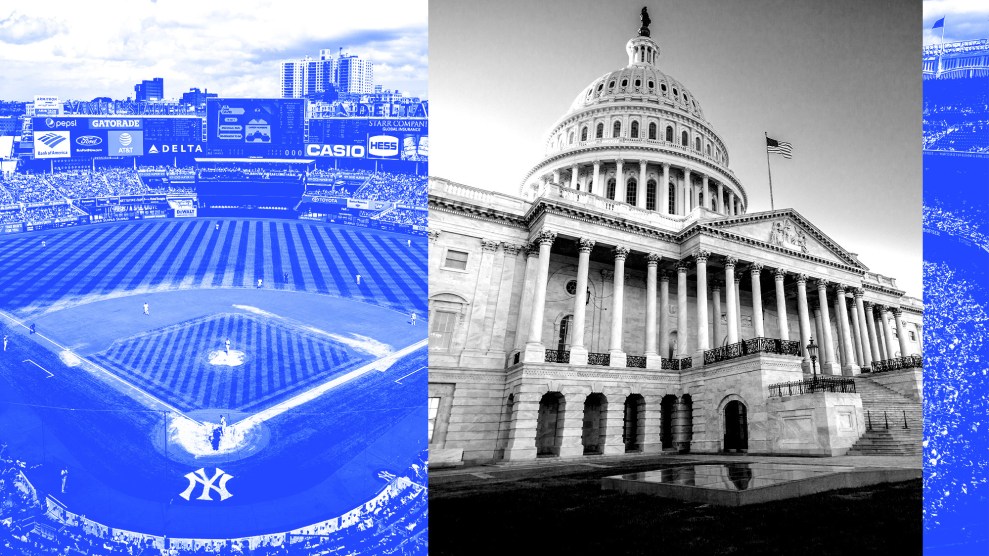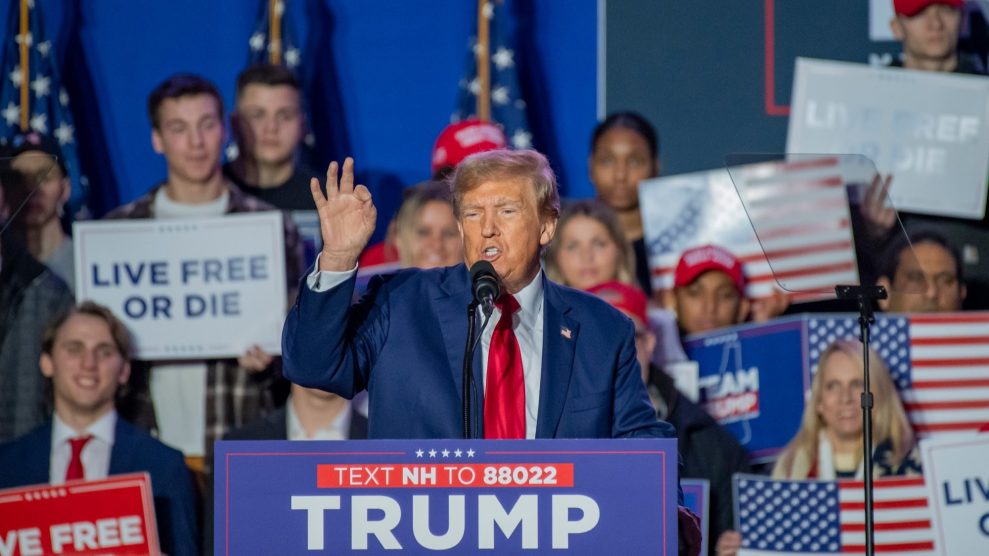
Mother Jones; Getty; Rob Tringali/Sportschrome/Getty
Yesterday afternoon, it hit me. As I watched C-SPAN yesterday, waiting for Republicans to get their shit together, I noticed something surprising: a lack of coffee cups in the hands of our nation’s elected representatives. I usually have an iced coffee glued to my palm, like most who hail from the Commonwealth of Massachusetts. How could Rep. Ayanna Pressley and her colleagues bear to sit around the chamber for hours without caffeine?
There is an obvious answer: Drinks and snacks aren’t allowed on the House floor, no matter what Rep. Kat Cammack (R-Fla.) says.
Cammack: They want us to fight each other. That much has been made clear by the popcorn, alcohol and blankets that is coming over there.
Democrats: *boo* pic.twitter.com/rrmRWdp07m— Acyn (@Acyn) January 4, 2023
As boredom over Republicans’ infighting set in, I started reading about which items are prohibited from the House floor and from the Capitol as a whole.
It struck me that the banned item list was not that extensive (especially since one of Republicans’ first orders of business upon retaking the House was to remove the metal detectors at the entrances to the chamber). Specifically, it struck me that the House was laxer than a place that I, like anyone who hails from the Commonwealth of Massachusetts, was been born to hate: Yankee Stadium.
I think that now is a proper time to do something we’ve needed to do for years: Compare the security standards of the hallowed halls of Congress with those of that soulless stadium in the Bronx. Throughout the list, I will first mention the Capitol’s rules and compare them with those of a team that has not won a World Series since 2009. And then I will decide a winner.
Bags
- Bags exceeding the size of 18″ wide x 14″ high x 8.5″ deep are not allowed in the Capitol. At Yankee Stadium, the permitted dimensions are 16″ x 16″ x 8″.
- The Capitol prohibits “briefcases, backpacks, and suitcases of any size” in the gallery, and presumably on the floor as well. Yankee Stadium bans “hard-sided bags or containers of any size.” I suppose you could bring a backpack to a Yankees game, as long as it’s not carrying any Tupperware.
Winner: The Capitol. Capacity is important.
Guns
- Come on, use your head. Weapons are a no-go at both venues. Well, kind of: The Capitol Police say that firearms, including replica guns and ammunition, are not allowed in the Capitol; other sources say that congresspeople are allowed to have guns in their personal offices, a rule apparently made to accommodate members who wanted to display ceremonial weapons. It remains unclear whether Rep. Lauren Boebert (R-Colo.), who holds a concealed carry permit, was ever able to sneak her Glock onto the House floor.
Winner: Everyone.
Aerosol cans
- Not allowed in either location, even if it’s just sunscreen or hairspray. Mace and pepper spray? Forget about it.
Winner: Capitol. You can’t get sunburned in there.
Snacks
- You can bring a snack to a ballgame.
- No snacks during a session of Congress. Rep. Grace Meng (D-NY) learned this the hard way.
They allowed Santos into the chambers but not my snacks. pic.twitter.com/Gevg00VcIY
— Grace Meng (@Grace4NY) January 3, 2023
Winner: Stadium of team that got swept by the Astros in 2022.
Laptops
- Not allowed in the ballpark or on the floors of the House and Senate, although the late Sen. Michael Enzi’s (R-Wyo.) 1997 request to bring his laptop to the Senate floor caused a lot of people to spend a lot of time deciding that Thomas Jefferson wouldn’t like that very much.
Winner: Capitol. Members are at least allowed to bring their laptops into the building and leave them in their offices. I once went straight to a game (against the Red Sox, of course) from work, with my laptop in tow. I was denied entry to the stadium and had to pay to rent a locker across the street. (Since we’re here: Another day, I foolishly brought a bouquet to the stadium, for my boyfriend’s college graduation. No flowers allowed. I had to pitch them.)
Cell phones
- It’s 2023. Cell phones are everywhere. You can take them to Yankee Stadium.
- People do take them to the House floor, even if they aren’t exactly allowed.
In Congress so far, George Santos appeared to spend most of his time on the floor furiously texting on his phone, probably to no one.https://t.co/r7gFwDg3HR
— Mother Jones (@MotherJones) January 3, 2023
Winner: Capitol, for the entertainment value of watching congresspeople texting.
Helmets
- Helmets are banned at Yankee Stadium. Rode a Citi Bike to the game? Tough luck.
- Helmets are allowed on the floor of Congress, as far as I can tell—as long as representatives aren’t wearing them on their heads.
Winner: Stadium of the team A-Rod played for. Oh, by the way, he and Jennifer Lopez broke up. Guess who she married? Ben Affleck. Guess who he roots for? The fucking Sox.
Hats
- There is perhaps no place where a hat is more acceptable than a baseball stadium.
- In Congress, not so much. Once top hats went out of style, Congress banned head coverings. Hoods were banned in 2012. Following the election of Rep. Ilhan Omar (D-Minn.), who wears a hijab, the rule was amended to allow religious headwear.
Winner: Yankee Stadium, where the Red Sox clinched the 2004 American League Championship Series before going on to win the World Series and break the Curse of the Bambino.
Projectiles
- Yankee Stadium banned flying discs and beach balls because it hates fun.
- The House and Senate have different rules, but former Sen. James Inhofe’s (R-Okla) snowball display suggests that projectiles are more acceptable in the Capitol than in the bleachers.
Winner: Capitol. If I could, I would throw stuff at the baseball team called the New York Yankees.
Selfie sticks
- Remember these? They can be pretty obtrusive, so I suppose it makes sense that they’re banned at Yankee Stadium.
- I can’t find any info on whether they’re allowed on the House floor, but their ban during the pope’s visit to Congress in 2015 suggests that they were at one time allowed.
Winner: Capitol. I am pro-selfie.
I reached out to the Capitol Police and the Sergeant at Arms for comment on some of the gray areas. We’ll keep you posted on their response. But for now, the answer is clear: I’d rather sit through three days of inane Speaker votes than ever step foot in Yankee Stadium again.
Correction: An earlier version of this story misstated the state former Sen. James Inhofe represented.















